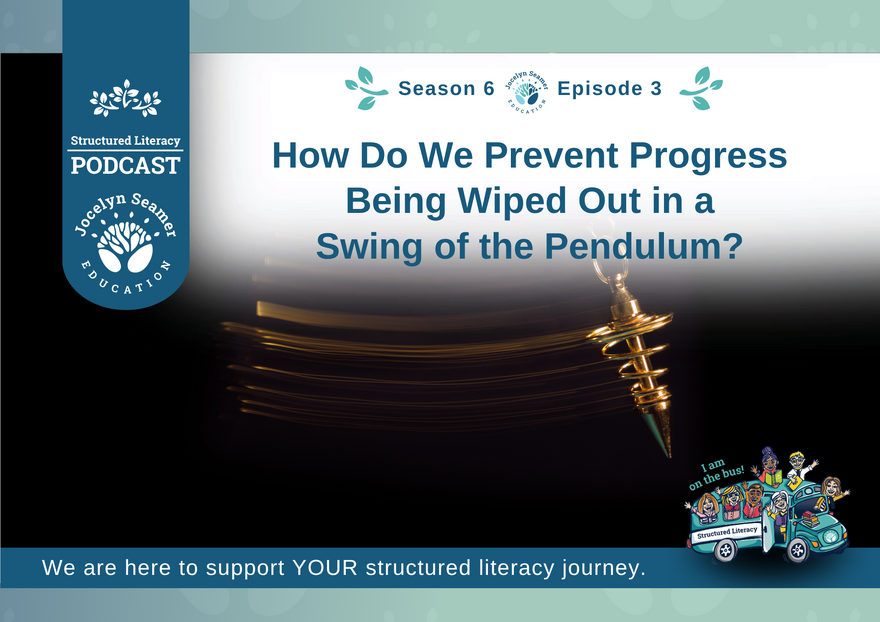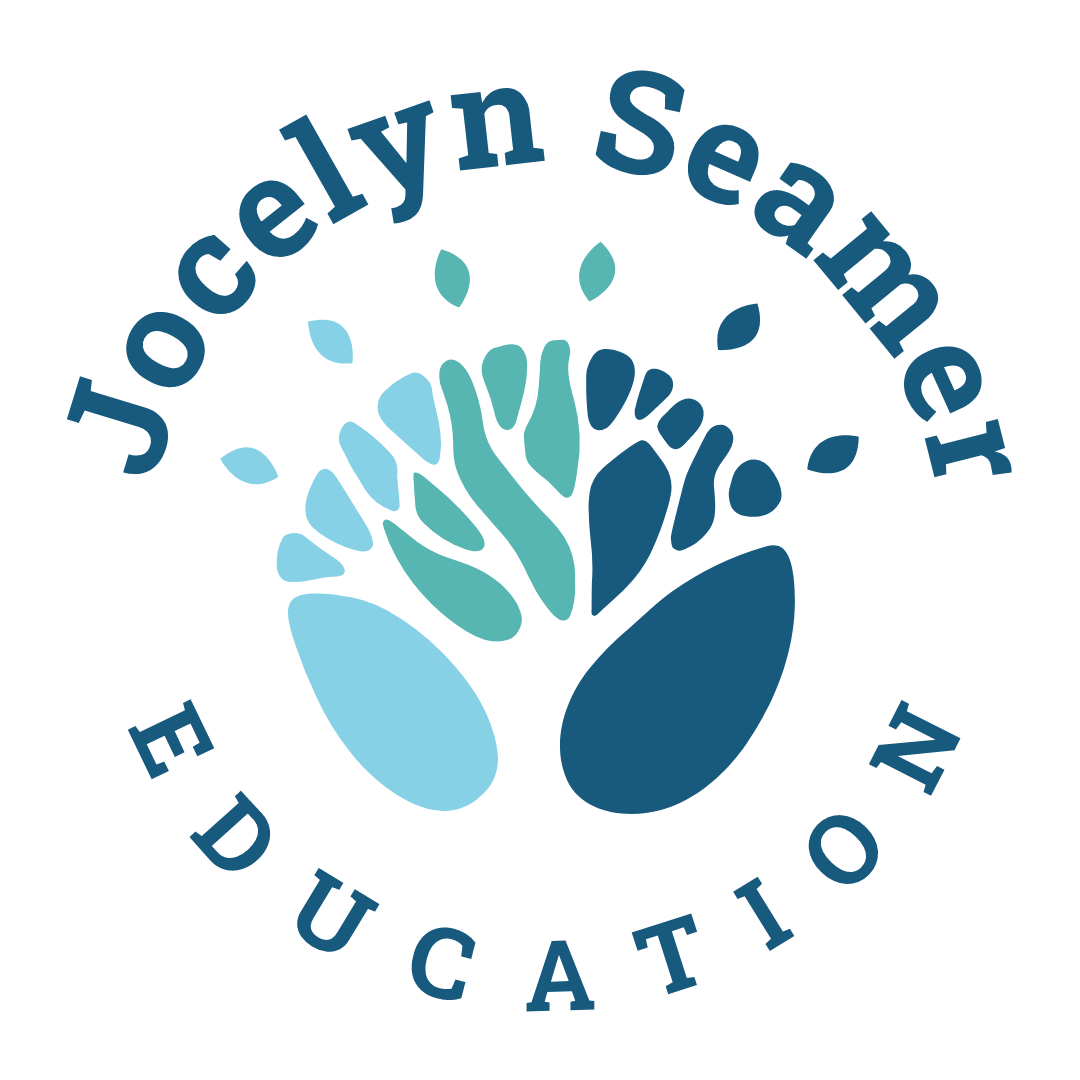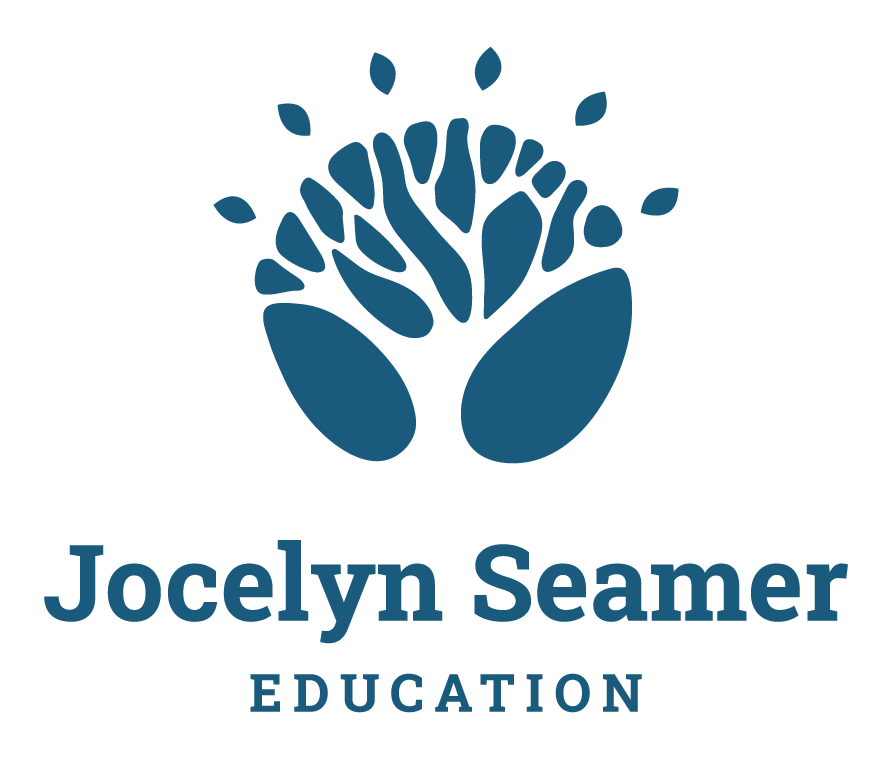S6 E3 - How Do We Prevent Progress Being Wiped Out in a Swing of the Pendulum?

Hello there, welcome, welcome and a huge welcome to you, it's Jocelyn here with this week's episode of the Structured Literacy Podcast, recorded in beautiful Tasmania, the lands of the Palawa people. Today's episode is all about something that can make or break the success of our structured literacy journey - and that's making data your friend rather than your foe.
When I think about the changes in our profession over the last 10 years, it's clear that we are operating in a different landscape. We haven't quite moved to a different planet, but in some ways, literacy instruction has undergone a tremendous transformation. Sight word programs, benchmark assessments, group rotations and levelled texts for novice readers are increasingly being replaced with explicit phonics, normed assessment and decodables.
We've done our Teacher Voice survey since 2021. And in 2021, the number of teachers who reported that they had a sight word program taught as whole words was 30%. At the end of 2023, that number was 19.6%. I'm so curious to know what that number is at the end of this year, in 2025. When asked about sending predictable texts home in the first two years of school, in 2021, 62% said yes that's what their school did. In 2023, that number was down to 36%. Again, I cannot wait to see what the numbers are at the end of this year. So changes aren't new in education. Whole language was once the new kid on the block, and balanced literacy in turn. Success was measured by self-reported measures and observation of compliance of particular practices.
But here's the thing - the presence of particular resources and the rollout of pedagogical practices are not the same as student outcomes in real terms. They never have been and never will be! If we're going to make sure that structured literacy doesn't disappear in a pendulum swing and we're going to grow our capacity in addressing student needs, we need to have data.
There's a huge difference between knowing what should be included in instruction and getting results from that. So what we're going to do now is focus on simple ways that we can be data informed.
Data is necessary, it's part of instruction. It helps us to evaluate the effectiveness of our work and it makes decisions for future instruction a lot more targeted and effective. Data - reliable data, that is - shifts our decision making from being emotional to being empirical.
How can we operate in a way that's data informed without ending up drowning in admin?
How do we keep things simple when the pace of change feels like it's outstripped our capacity to cope?
And how do we use data as a vehicle for exercising professional judgement rather than as a compliance-driven task?
The answer is to make it a part of how you do business. And in today's episode, I'm sharing simple ways to make it your friend.
First, make sure that you know the purpose of the assessments you are using.
This prevents you from going down a path of action that doesn't get you results. Your normed screeners don't help you decide what next to teach. The phonics inclusions in the non-word fluency measures are very different from the range of correspondences we will teach in our phonics lessons.
And I'm seeing this confusion all the time. Teachers looking at a screening tool like DIBELS and thinking that because it includes phonics elements, that they don't have to do any other phonics assessment and they can use that DIBELS data to plan the next step in phonics instruction. But that's not what these tools are designed for. They're designed to identify students who might be at risk and need additional support. They're not designed to tell you whether to teach 'ai' or 'ee' next week.
Second, use a phonics assessment that is aligned to the scope and sequence of your phonics program.
It's virtually impossible to use the data effectively if you don't. Think about it - your phonics program teaches graphemes in a particular order, but your assessment tool presents them in a completely different sequence. How are we supposed to make sense of what students know and what they need to learn next? Well, you can't.
High quality systematic synthetic phonics programs come with their own assessment tools. If yours doesn't, you can just make a simple one yourself. The key is that the assessment needs to match what you're teaching and in the order you're teaching it.
Third, at the start of your journey, take the pressure off yourself and recognise that your first job is to fill gaps in knowledge.
Only when we've done that can we move forward. So when we're transitioning from balanced literacy practices to structured literacy, or we're changing program, many of our students will have gaps in their phoneme-grapheme correspondence knowledge. This could be because there's simply knowledge that they haven't learned or that the scope and sequence documents work in a different order. So what one program may be expecting you haven't actually taught yet. But don't feel pressure to race through new content when students haven't yet mastered the foundations.
I'm often working with schools where teachers feel anxious because their Year 2 students don't know all of the basic code correspondences yet. And that is a reason to really put our foot on the pedal and get going. But here's the thing - if they don't know the basic code, jumping ahead to the complex code isn't going to fix the problem. We have to fill the gaps first, and then move forward.
Fourth (and this one might get me into a little trouble but I'm ok with that), if your phonics program has a prescriptive pacing guide, throw it out.
Not the program, just the guide. Guides should indicate optimal, ideal pacing, but the decisions about whether you move on or not should be about what you're seeing in your student data. You cannot be both responsive to students and stick strictly to the pacing guide. You really need to choose the data, and know what your at least points are at the beginning, middle and end of every grade.
I know this can feel scary, especially for new teachers or those new to structured literacy. We want to get it right, we want to make sure that we're working with fidelity. But here's what I want you to remember - the pacing guide was written by someone who doesn't know your students. They're not in the room, they're not seeing the response of the students in real time. You're doing that. If your data shows that students need more time to consolidate learning, then give them that time. Don't go too slowly but give them the space they need to build to mastery. If your data shows they're ready to move faster, do that instead. Because if we're not hitting the mark on meeting student need, we're going to have children sitting in classrooms wasting time because they're either not able to engage with what they're doing because it's too far ahead, or they already knew it and they really could be moving on.
Fifth, check in more frequently.
Rather than waiting until the end of the term to evaluate the impact of instruction, do it fortnightly through a simple check-in. Every week that passes without checking on progress is another week where gaps are probably forming.
We have an episode about simple phonics assessment which we'll link to on our website in the show notes for this episode. But basically every two weeks, spend 10 minutes, or 5 minutes, with each student doing a quick check of their phoneme-grapheme correspondences. Note which are automatic, which ones are emerging, and which ones they just simply don't know yet. This doesn't need to be a super formal, sit-down 50 minute assessment per child. Please don't try and do that, it's not necessary and it's not workable. It can be done during a morning routine, transitions, or while other students are engaged in independent work. And please work with your classroom colleague. If you have an assistant in your room, please work with them to get this work done. You don't have to do it all on your own.
Sixth, use personalised practice to help students consolidate the exact gaps or wobbles they have.
Resource Room members have access to printables on this and a Mastermind to explain how to do it well. But you can create your own simple practice materials. Include your classroom support staff in putting them together - they can look at an assessment and identify gaps. They can do that no problem.
The beauty of personalised practice is that it's super efficient. We're not wasting students time in spending a lot of time reviewing things they already know while not providing enough time enough time on the things they need with a greater intensity.
Finally, pay attention to the correspondences and irregular high frequency words that are wobbly in your daily review.
Your best daily review is aligned with the exact needs of your students. Include both recognition and recall to keep an eye on student development, both of these are important. So instead of just showing them the grapheme and asking them to say the phoneme, include recall.
During your daily review sessions, notice which correspondences students hesitate on, which ones they get wrong, and which ones they're confusing with others. Make notes, mentally or on paper, and revisit these in future lessons.
I want to be really clear about something. Implementing programs and adopting new practices means nothing if we do not measure success and growth with timely, valid and reliable assessment. This shouldn't sit outside of us as an additional burden, it needs to be a baked-in part of what we do. Because if we cannot measure our impact, we can't manage it. We also can't ensure that we're actually achieving the success we're claiming we're going to achieve, because that is a huge protective factor against pendulum swings.
I do want to acknowledge though that data collection and management can feel overwhelming, especially when you're already managing behaviour, lesson planning, communicating with parents, and all of the other things that come with teaching. The key is to start simple and build your capacity over time working as a team.
Choose one simple data point to track consistently. It might be phoneme-grapheme correspondence. Pick one thing, get good at collecting and using that data, and then add more elements over time.
The other thing I want to emphasise is that this data should inform us as we use our professional judgement. The numbers tell us part of the story, but not everything. So we have to triangulate, we have to connect data with our observation. So a student might know all their phoneme-grapheme correspondences on an assessment but still struggle to apply them when reading connected text. That observation valuable one. You don't have to sit your Foundation students down for 50 minutes to discover that, you can record that during your observation.
That is also not about labelling students and putting kids in the "dumb" group. It's about understanding where each student is in their learning journey so that we can meet them there and move them forward. As we know, some students will move quickly, others will need more time and support. Both of those scenarios are perfectly normal and both deserve our best efforts.
I also want to talk about the emotional side of data. It can be disheartening when you've been working so hard and the data doesn't show the growth you were hoping for. But here's what I've learned in my years of teaching and working with schools. If students aren't making the progress you expected, the data is a gift of feedback.
- Maybe the pace is too fast,
- Maybe the pace is too slow,
- Maybe there are gaps that we haven't properly identified,
- Maybe the instruction needs to be more explicit or include more practice,
- Maybe we haven't got our groupings right,
- Maybe we're not teaching the right content to the right students to enable them to fully engage.
The goal isn't to have perfect data or to have every student progressing at the same rate, that's a bit of a pipe dream. The goal is to use data to make informed decisions about instruction and to ensure that every student is learning and growing at a rate that is ambitious and yet realistic.
As we wrap up today's episode, I want to come back to my key message. We've made tremendous progress in moving towards evidence-informed literacy instruction. But the job is not nearly done just because we have a program in place. And when will the job be done? The job will be done when every student in our schools is successful. If we're going to prevent another swing of the pendulum that undoes the gains we've made, we need to make sure that our practice is effective. And the only way to know if practice is effective is through regular, thoughtful use of data.
Remember, you don't have to drown in the data to be data-informed. Start simple, be consistent, and be brave enough to make the adjustments you need to when things are not working as you want them to. Make data your friend, not your foe.
Until next time, happy teaching everyone. Bye.
Show Notes:
S5 E3 - Quick Phonics Assessment to Start the Year
Looking for printables and Masterminds to help students consolidate the gaps they have? Join us inside The Resource Room!


 Jocelyn Seamer Education
Jocelyn Seamer Education
0 comments
Leave a comment